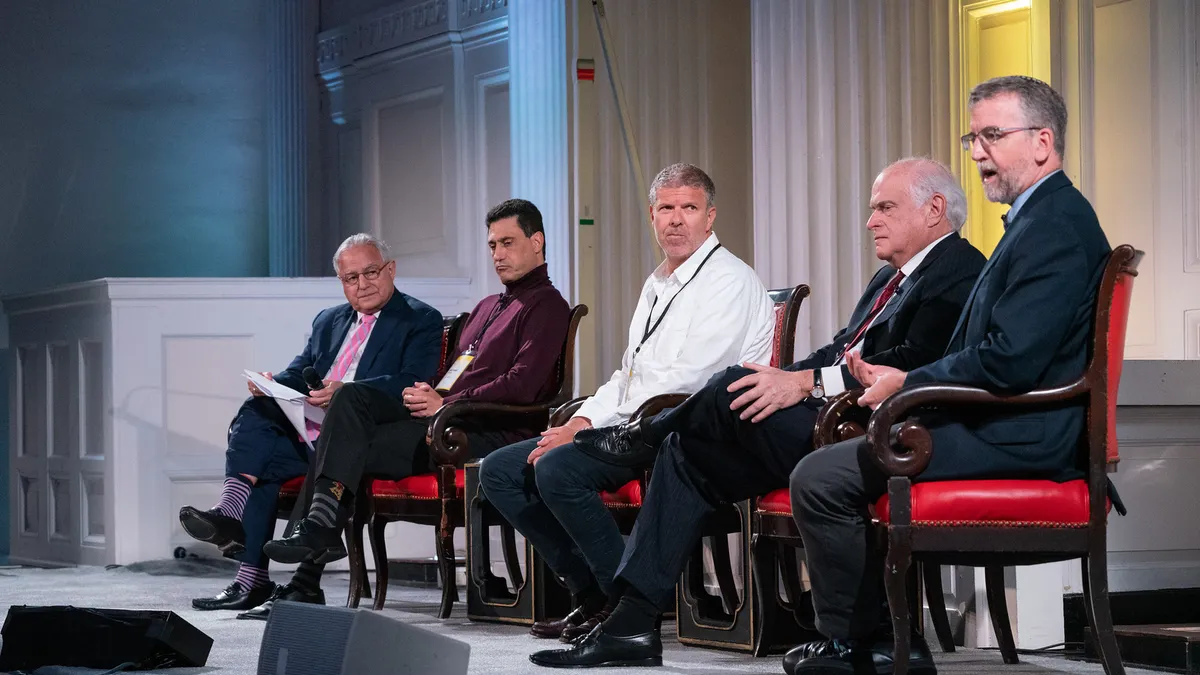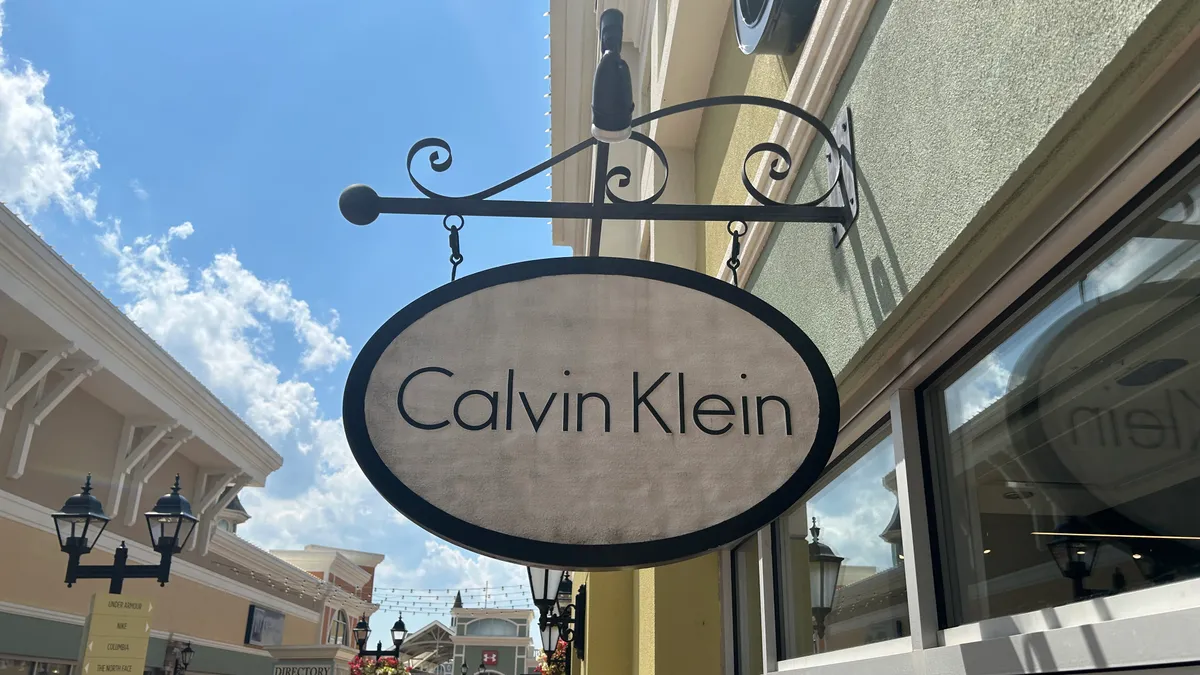Retailers agree the trade war will impact the consumer. At the same time, no retailer wants to lose the larger war with no end: the price war.
Fashion executives, stakeholders and experts convening at the Sourcing Journal Summit in New York City on Thursday agreed, it's not just the Targets and the Walmarts of the world refusing to raise prices. Retailers across the board are not interested in raising their prices or forfeiting their margins to help out stressed suppliers.
"The pain is gonna continue for us and that’s not good at all," said Steve Lamar, executive vice president for the American Apparel and Footwear Association. At last year's summit, Lamar predicted exactly what has now come to pass. He said a fourth trance of tariffs was coming, one way or another. Since then, they have come to fruition, rolling out in two stages beginning Sept. 1 and Dec. 15.
What has evolved since the fall of 2018 is the thinking around how to reorganize supply chains and share the cost burden.
"The reason wholesalers exist is to take on risk. That’s how they look at it,"

Andrew Postal
Partner, MMG Advisors
"Nobody wants to accept a price increase from the person below them in a supply chain," said Lamar. "At the same time, these are real tariffs. Tariffs are not paid by the Chinese. Tariffs are paid by the U.S. importers and it's real money that you have to pay when you make entry for the product."
Andrew Postal, managing partner of MMG advisors, said retailers who pass on cost increases will see "tremendous erosion in their top line." He added that since so many retailers have their own private label brands, they are facing the same challenges as wholesalers. "They're busy dealing with their problems. They don't want to hear about yours. The reason wholesalers exist is to take on risk. That’s how they look at it," said Postal.
More tariffs, fewer options
Changing the manufacturing country has been a natural course of exploration for apparel and footwear businesses to mitigate tariffs, but depending on the product, that may be easier said than done.
Michael Kors Senior Vice President of Accessories and Footwear Production and Sourcing Nathan Serphos said his company is "relatively cost-neutral" when it comes to tariffs, mostly due to nearly five years of sourcing diversification work undertaken to avoid what the brand saw as inevitable labor cost increases as China modernizes.
"No single country or region can absorb all the capacity that China will shed in the 10 years coming, trade war or not."

Michael Zakkour
Retail Consultant
The effort led to spreading manufacturing around the globe, in other Asian countries, the Caribbean and South America. Michael Kors is in good shape in terms of the Trump administration's trade war, but the work has not all been smooth and Serphos had a warning for any brands looking to rapidly diversify.
"There is plenty of risk. We moved production into Ethiopia thinking that it was a slam dunk — duty-free to the U.S. — but it was a disaster," he said. Without experienced labor and local management, the plant could not perform to Michael Kors standard, Serphos implied.
New production locations may seem like opportunity, but without solid history of success, they can easily fall apart, explained Serphos. And though experienced alternatives to China exist for many types of footwear and apparel production, more than a year of getting-out-of-China talk has decreased capacity elsewhere.
"Vietnam had a limited amount of capacity and now they’re pretty much maxed out," said Postal. Vietnam was the number one China alternative named by summit attendees (pictured above). Furthermore, Michael Zakkour, a retail consultant, said wholesalers need to be aware that the supporting infrastructure, beyond manufacturing capacity and skill, in countries outside China is experiencing major upticks in volume.
"Right now, the bottom line is there are no new roads, no new rail systems, no new electrical grids, no new ports, no new berths at those ports, which is why you end up with three-day lines of trucks," he said. "No single country or region can absorb all the capacity that China will shed in the 10 years coming, trade war or not."
Zakkour and Lamar also said no country is completely safe from the Trump Administration's strategy, which, though focused on China, is intended to shift production to U.S. soil — a possibility mentioned by none of the speakers as a viable option.
Craftier tactics or back to basics?
With tranche four tariffs partially here and more significantly, after more than a year of expectations that they would come eventually, tariff mitigation options are shifting, several speakers implied.
Beyond country of origin, Harold Grunfeld, partner at Grunfeld, Desiderio, Lebowitz, Silverman & Kledstadt, noted that now in light of tranche four, wholesalers need to be sure their finance and legal departments are turning over every rock to mitigate tariffs. He described one example where a Chinese manufacturer was able to largely mitigate tariffs for its client by establishing a separate entity for its administrative office so the purchasing firm could buy indirectly. Furthermore, Grunfeld said finding ways to decrease product value by 10-15% was once an option dismissed by brands, but is now looking more attractive as apparel importers settle into their new tariff reality.
Grunfeld said financial engineering tactics firms may have ignored in the past, especially those categories covered under tranche three that are now tariffed at 25% but were recently set to rise to 30% until President Trump reversed course, are getting a second look now.
"There really is no good solution here," said Lamar. "Once you’re introducing a new cost to the system there's going to be a damaging effect throughout."
One overlooked tactic suggested by several speakers was to get back to basics.
Even with tariffs, "I can guarantee you that markdowns are the largest expense you have," said Sourcing Journal Founder and President Edward Hertzman. Echoed by several speakers throughout the day, Hertzman said the immense markdowns currently in the retail marketplace are evidence that the apparel industry is not operating with much inventory efficiency, which heightens the impact of every other challenge wholesalers and retailers face, including tariffs.























